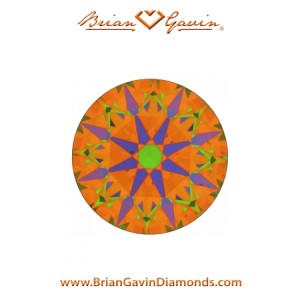
What is the formula for total depth of a diamond if you know the diameter?
“I read your tutorial on how to calculate diamond measurements, and was wondering what the formula is to determine the total depth of a diamond if you know the diameter? In that tutorial, you use a diamond which measures 6.48 x 6.53 x 4.00 mm. It then explains that the average diameter is calculated by adding 6.48 + 6.53 = 13.01 / 2 = 6.505 mm, average diameter. Knowing this, it is then possible to figure out the total depth of the diamond? If so, what is the formula for calculating total depth?”
Calculating total depth of a round diamond:
The formula for calculating the total depth of a round brilliant cut diamond is actually pretty simple. Simply divide the depth of the diamond, by the average diameter. In this case, the depth of the diamond is 4.00 and the average diameter is 6.505.
The calculation will look like this 4.00 / 6.505 = 0.614 then you’ll just move the decimal two spots to the right, and the total depth of the diamond is 61.4%.
But as stated in the other tutorial on how to calculate diamond measurements, it really isn’t necessary to do any of this manually at this point in time. All major gemological laboratories and Brian Gavin Diamonds, use state-of-the-art computerized proportions analysis to measure diamonds these days. It’s faster and much more accurate than trying to measure diamonds manually.
Of course, we understand completely that a lot of people might just want to know how to calculate diamond proportions for the sake of knowing. That’s cool, and this is why this sort of thing is still taught in gemology courses. It’s not exactly rocket science; you just need to know the formula for calculating diamond total depth. But frankly the most important thing to realize is that Brian Gavin Signature diamonds will take you to the moon!
Not literally of course, you’d need either a really powerful cow or a space ship to make that journey, but figuratively our diamonds can take you there, and put stars in her eyes at the same time! The simple truth is that our diamonds outperform practically everything else by design. Our diamonds deliver outstanding light performance, because we focus on more than just proportions.
Performance Beyond Proportions:
The fact of the matter is that while most people focus on the proportions of the diamond, there is actually a lot more to the puzzle. Diamond cutting technology has advanced well beyond what it was just a few short years ago, when the focus was primarily on proportions.
 Now it’s all about light performance, that’s why the American Gemological Laboratory changed the scope of their grading platform back in June of 2005. And then they changed it again, and again, as advancements such as Angular Spectrum Evaluation Technology were discovered. The AGS uses ASET to actually measure diamonds for brightness, and determine where in the room a diamond is gathering light from. We use ASET for those reasons, but also to determine how evenly light is being distributed (reflected) throughout the diamond. Imagine having this type of technology at your fingertips when during the design phase of diamond cutting.
Now it’s all about light performance, that’s why the American Gemological Laboratory changed the scope of their grading platform back in June of 2005. And then they changed it again, and again, as advancements such as Angular Spectrum Evaluation Technology were discovered. The AGS uses ASET to actually measure diamonds for brightness, and determine where in the room a diamond is gathering light from. We use ASET for those reasons, but also to determine how evenly light is being distributed (reflected) throughout the diamond. Imagine having this type of technology at your fingertips when during the design phase of diamond cutting.
Sure. You can use the proportions of a diamond to estimate light performance, but the only way to judge it for real, is to evaluate the diamond through reflector scopes, such as ASET, Ideal Scope, and Hearts & Arrows scopes. Which is why we provide these images for every Brian Gavin Signature round diamond. The time for guessing about visual performance is over.




















